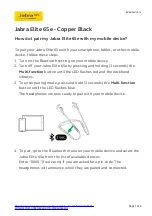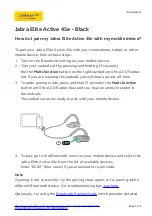
RUGGEDCOM ROS
User Guide
Chapter 5
Setup and Configuration
The Management VLAN
135
Section 5.1.1.3
The Management VLAN
Management traffic, like all traffic on the network, must belong to a specific VLAN. The management VLAN is
configurable and always defaults to VLAN 1. This VLAN is also the default native VLAN for all ports, thus allowing
all ports the possibility of managing the product. Changing the management VLAN can be used to restrict
management access to a specific set of users.
Section 5.1.1.4
Edge and Trunk Port Types
Each port can be configured as an edge or trunk port.
An edge port attaches to a single end device, such as a PC or Intelligent Electronic Device (IED). An edge port
carries traffic on the native VLAN.
Trunk ports are part of the network and carry traffic for all VLANs between switches. Trunk ports are automatically
members of all VLANs configured in the switch.
The switch can 'pass through' traffic, forwarding frames received on one trunk port out of another trunk port. The
trunk ports must be members of all VLANs that the 'pass through' traffic is part of, even if none of those VLANs are
used on edge ports.
Frames transmitted out of the port on all VLANs other than the port's native VLAN are always sent tagged.
NOTE
It may be desirable to manually restrict the traffic on the trunk to a specific group of VLANs. For
example, when the trunk connects to a device, such as a Layer 3 router, that supports a subset of the
available LANs. To prevent the trunk port from being a member of the VLAN, include it in the VLAN's
Forbidden Ports list.
For more information about the Forbidden Ports list, refer to
Section 5.1.1.6, “Forbidden Ports List”
.
Port Type
VLANs Supported
PVID Format
Usage
Untagged
VLAN Unaware Networks
: All frames are sent and received without
the need for VLAN tags.
Edge
1 (Native)
Configured
Tagged
VLAN Aware Networks
: VLAN traffic domains are enforced on a
single VLAN.
Trunk
All Configured
Tagged or Untagged
Switch-to-Switch Connections
: VLANs must be manually created and
administered, or can be dynamically learned through GVRP.
Multiple-VLAN End Devices
: Implement connections to end devices
that support multiple VLANs at the same time.
Section 5.1.1.5
Ingress and Egress Rules
Ingress and egress rules determine how traffic is received and transmitted by the switch.
Ingress rules are applied as follows to all frame when they are received by the switch:
















































